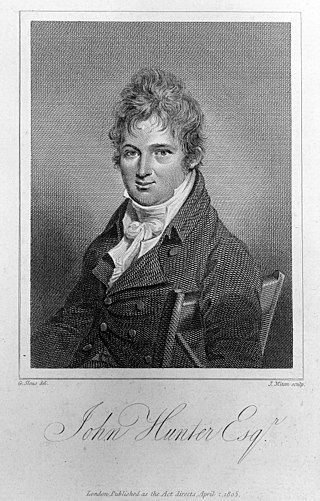Life
Samuel exhibited annually at the Royal Academy from 1786 to 1823, and also largely at the British Institution, his works being of the scenery of Cornwall, Westmorland, and other picturesque parts of England. He was a member of Thomas Girtin's sketching society in 1799, and one of the earliest workers in lithography. His death, in or soon after 1823, was accidental, caused by an old wall falling on him while he was sketching. [1]

Paul Sandby was an English map-maker turned landscape painter in watercolours, who, along with his older brother Thomas, became one of the founding members of the Royal Academy in 1768.
George William de Saulles was a British medallist. He designed the obverse of coins of the United Kingdom and its colonies under Queen Victoria and King Edward VII.
The post of Lord President of Munster was the most important office in the English government of the Irish province of Munster from its introduction in the Elizabethan era for a century, to 1672, a period including the Desmond Rebellions in Munster, the Nine Years' War, and the Irish Rebellion of 1641. The Lord President was subject to the Lord Deputy of Ireland, but had full authority within the province, extending to civil, criminal, and church legal matters, the imposition of martial law, official appointments, and command of military forces. Some appointments to military governor of Munster were not accompanied by the status of President. The width of his powers led to frequent clashes with the longer established courts, and in 1622 the President, Donogh O'Brien, 4th Earl of Thomond, was warned sharply not to "intermeddle" with cases which were properly the business of those courts. He was assisted by a Council whose members included the Chief Justice of Munster, another justice and the Attorney General for the Province. By 1620 his council was permanently based in Limerick.

Samuel Shelley (1750/56–1808) was an English miniaturist and watercolour painter.

Charles Vacher (1818–1883) was a British painter in watercolours.

Edward Dayes was an English watercolour painter and engraver in mezzotint.

William Henry Pyne was an English writer, illustrator and painter, who also wrote under the name of Ephraim Hardcastle. He trained at the drawing academy of Henry Pars in London. He first exhibited at the Royal Academy in 1790. He specialized in picturesque settings including groups of people rendered in pen, ink and watercolour. Pyne was one of the founders of the Royal Watercolour Society in 1804.

James Mitan was a British engraver.
Henry Tidey was a British watercolourist.
Robert Johnson was a British artist, an apprentice of Thomas Bewick in his Newcastle upon Tyne workshop. Bewick taught him wood-engraving, but discovered Johnson's talent for sketching in watercolour directly from nature.
Samuel John Stump was an English painter, who was born at Corsham, Wiltshire, and baptised there on 2 September 1779, the youngest son of John and Betty Stump of Corsham, Wiltshire.
William Savage (1770–1843) was an English printer, engraver, draughtsman and author of several works about printing.
William Nutter was an English engraver and draughtsman.
Samuel Williams was a British draughtsman and wood-engraver.
Peltro William Tomkins (1759–1840) was an English engraver and draughtsman.
Charles Wild (1781–1835) was an English water-colour artist, known as a specialist in architecture.
Alfred Gomersal Vickers (1810–1837) was an English painter of seascapes and landscapes.
Benjamin Thomas Pouncy was an English draughtsman and engraver.

William Henry Kearney, was an English water-colour painter of landscapes and figure subjects.
William Pengree Sherlock was a British artist.
This page is based on this
Wikipedia article Text is available under the
CC BY-SA 4.0 license; additional terms may apply.
Images, videos and audio are available under their respective licenses.








